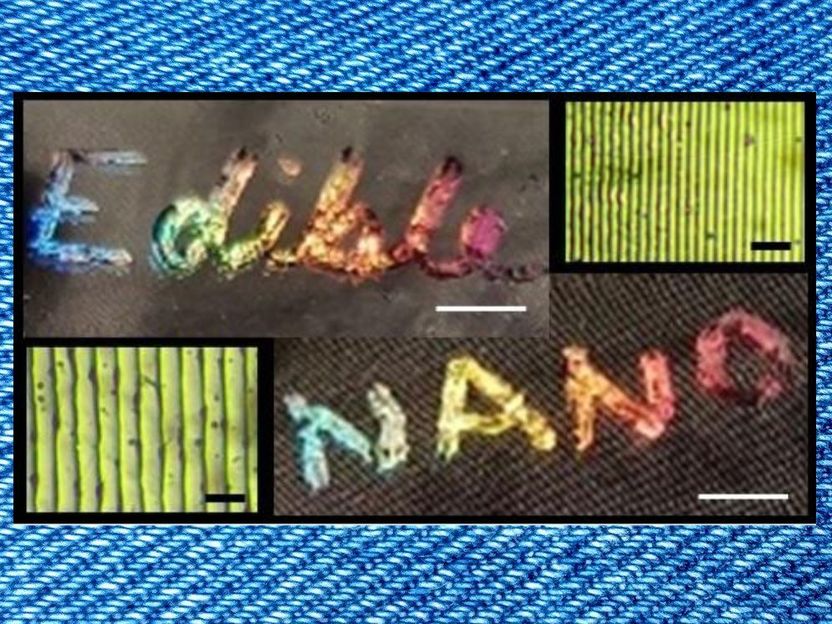Edible holograms could someday decorate foods
holograms are everywhere, from driver's licenses to credit cards to product packaging. And now, edible holograms could someday enhance foods. Researchers reporting in ACS Nano have developed a laser-based method to print nanostructured holograms on dried corn syrup films. The edible holograms could also be used to ensure food safety, label a product or indicate sugar content, the researchers say.

Nanostructures (yellowish-green images; scale bar, 5 μm) were patterned onto dried corn syrup films, producing edible, rainbow-colored holograms (scale bar, 2 mm).
Adapted from ACS Nano 2021, DOI: 10.1021/acsnano.0c02438
Most holograms are imprinted with lasers onto metal surfaces, such as aluminum, but the materials aren't edible. For foods, holograms made with nanoparticles have been proposed, but the tiny particles can generate reactive oxygen species, which might be harmful for people to eat. In a different approach, food scientists have molded edible holograms onto chocolate, but the process only works for certain types of the confection, and a different mold is needed for each hologram design. Bader AlQattan, Haider Butt and colleagues wanted to find a safe, fast and versatile way to pattern edible holograms onto a variety of foods.
To develop their method, the researchers made a solution of corn syrup, vanilla and water and dried it into a thin film. They coated the film with a fine layer of non-toxic black dye. Then, they used a technique called direct laser interference patterning to etch off most of the dye, leaving behind raised, nanoscale lines that formed a diffraction grating. When struck by light, the nanostructure diffracted the light into a rainbow pattern, with different colors appearing at different angles of viewing. The team could control the intensity and range of colors by varying the spacing between lines in the grating or the sugar content of the corn syrup film. Before edible holograms are ready to hit store shelves, however, the researchers want to adapt the method to a food-grade dye that could replace the synthetic black dye used in these pilot experiments.
Most read news
Other news from the department science

Get the food & beverage industry in your inbox
By submitting this form you agree that LUMITOS AG will send you the newsletter(s) selected above by email. Your data will not be passed on to third parties. Your data will be stored and processed in accordance with our data protection regulations. LUMITOS may contact you by email for the purpose of advertising or market and opinion surveys. You can revoke your consent at any time without giving reasons to LUMITOS AG, Ernst-Augustin-Str. 2, 12489 Berlin, Germany or by e-mail at revoke@lumitos.com with effect for the future. In addition, each email contains a link to unsubscribe from the corresponding newsletter.


























































